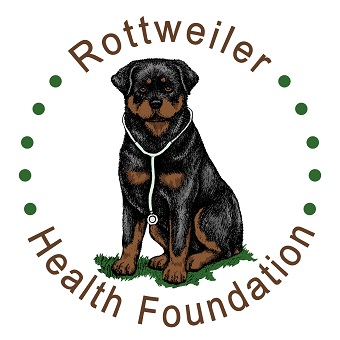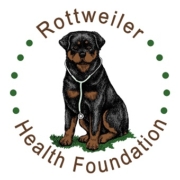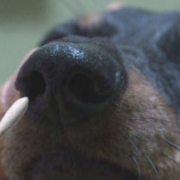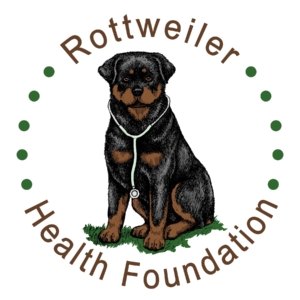Canine Osteosarcoma Early Detection Study – April 2024 Progress Report
/in Health News /by Denise Gross
Canine Osteosarcoma Early Detection Study
April 2024 Progress Report
CHF Grant Number 03032-MOU
Project Title Early Detection of Canine Osteosarcoma
Investigator: Jaime Modiano
Date: 04/04/2024
Institution University of Minnesota
Investigator(s) PI: Jaime F. Modiano Co-Is: Antonella Borgatti; Brenda J. Weigel; Logan Spector; Daniel Vallera; Aaron Rendahl
Project Start Date 04/01/2022
Current Date 04/04/2024
It is the policy of AKC Canine Health Foundation (CHF) not to disclose information from progress reports of sponsored studies to any individual, club, organization, CHF grant committee member, peer reviewer or company if the information contains data that, in the opinion of the CHF or the investigator, represents a conflict of interest. CHF sponsors research studies and contractually requires all investigators to provide periodic progress reports. The Foundation makes grant payments based on satisfactory progress of the study. Research progress is evaluated based on reviewing information provided by the researcher including the initial schedule of work to be performed and progress reports. These reports relate to the research methodology without drawing conclusions regarding research results. CHF shares the non-confidential section of progress reports with donors who contribute to CHF a significant percentage of the cost of the study. This sharing by CHF is intended to nurture the interest of the donor in both the sponsored study and canine health research in general. Sponsors may also be in a position to assist the research in the identification of any additional dogs for the study. The policy is also designed to assure the donor that his/her money is being well spent and the CHF is closely monitoring the study.
Non-Confidential Progress Summary
In this study, we aim to identify blood biomarkers that can be used to assign a probability of developing osteosarcoma to otherwise healthy dogs at risk for this disease. We had a large set of samples and also collected new samples for this project. The control (old and new) samples include healthy dogs and dogs with cancer. These samples are used to identify the patterns that are exclusively present in dogs with cancer, and specifically in dogs with bone cancer. The experimental group includes healthy dogs at risk for development of bone cancer. This risk is based on age (older than 4.5 years) and on size. Dogs from six breeds received preference in recruitment, although large dogs of other breeds and mixed breeding were also eligible to enroll. A gift from the Irish Wolfhound Foundation in advance of this project was instrumental in helping us to finalize the infrastructure. It also allowed us to pilot enrollment of 25 dogs to make sure the protocols were efficient and reasonable. Recruitment for the experimental group was launched at the end of August of 2022 and we began enrolling dogs and receiving samples, in random order, in October 2022. As of March 31st, 2024, we have completed enrollment and collected a total of 478 new samples for both parts of this project. We are following enrolled dogs for the duration of the project (and ideally for the lifetime of the dogs) and experiments and data analysis are beginning with the goal of constructing the metrics of the test. Such a test for predicting the occurrence of bone cancer in dogs would be extremely valuable to veterinary medical community and dog owners world-wide. Our approach will use artificial intelligence technologies to describe patterns that are associated with the formation of these cancers.
We have also used this project as a training vehicle to engage young scientists and encourage them to pursue careers in canine health research. Courtney Labé, Meagan Wojtysiak, and Emily Myers are veterinary students who completed Summer Scholar projects in the lab and have continued work on this program as they progress through veterinary school. These students have each expressed an interest in continuing on a path that includes research, and specifically research that aims to improve the health and wellbeing of companion dogs, as a major component of their future careers.
Canine Osteosarcoma Early Detection Study
/in Health News /by Denise GrossNew Research Grant Approved
RHF is pleased to announce that we have finalized the funding for the research project “Canine Osteosarcoma Early Detection” by Jaime F. Modiano, VMD, PhD, Perlman Professor of Oncology Director, Animal Cancer Care and Research Program College of Veterinary Medicine and Masonic Cancer Center, University of Minnesota. The grant proposal has been in process for more than a year and this research project was peer reviewed by the AKC CHF scientific advisory board and approved without any changes. Barring any unforseen delays, research is set to begin on April 1, 2022.
List of Veterinary Schools in the US
/in Health News /by adminmichelleVeterinary Schools
Veterinary schools generally have hospitals where your dog can get specialized care beyond what most general veterinary practices can provide. The faculty may also be conducting research on new treatment options that are not yet widely available. Institutions that earn AVMA Council on Education (COE) accreditation confirm a commitment to quality and continuous improvement through a rigorous and comprehensive peer review.
Visit the American Kennel Club Canine Health Foundation website to see the current list of Veterinary Schools.
Learn more about donating to the the Rottweiler Health Foundation.
Canine Tick-Borne Disease
/in Health News /by adminmichelleCanine Tick-Borne Disease
Thousands of dogs are infected annually with dangerous tick-transmitted diseases. Ticks are parasites that attach themselves to dogs, feed on blood and transmit diseases directly into the dog’s system. Major tick-borne diseases transmitted to dogs in the United States include:
• Lyme disease, which comes from the deer tick, can cause stiffness, lameness, swollen joints, loss of appetite, fever and fatigue. Your dog may not show signs of the disease until several months after infected.
• Canine Ehrlichiosis, found worldwide, is the most common and one of the most dangerous tick-borne disease organisms known to infect dogs. Caused by the brown dog tick, symptoms may not surface for months after transmission, and can include fever, loss of appetite, depression, weight loss, runny eyes and nose, nose bleeds and swollen limbs.
• Canine Anaplasmosis, also called dog fever or dog tick fever, is transmitted from the deer tick. Symptoms are similar to other tick diseases including fever, loss of appetite, stiff joints and lethargy, but also can include vomiting, diarrhea. In extreme cases, dogs may suffer seizures.
• Rocky Mountain Spotted Fever comes from the American dog tick, the wood tick and the lone star tick. Symptoms include fever, stiffness, neurological problems and skin lesions. Typically the illness lasts about two weeks, but serious cases could result in death.
• Canine Babesiosis is typically transmitted by the American dog tick and the brown dog tick. Causing anemia, symptoms may also include pale gums, weakness and vomiting.
• Canine Bartonellosis comes from the brown dog tick. Symptoms are intermittent lameness and fever. Left untreated, this disease can result in heart or liver disease.
• Canine Hepatozoonosis is thought to be transmitted by the brown dog tick and Gulf Coast ticks. Your dog can be infected if he eats one of these disease-carrying ticks. Symptoms are fever, runny eyes and nose, muscle pain and diarrhea with the presence of blood.
Read the full article on the American Kennel Club Kennel Health Foundation website
Canine Influenza
/in Health News /by adminmichelleCanine influenza is caused by infection with a specific type of influenza virus. Influenza viruses belong to a large group of RNA viruses classified as influenza A, B or C. These virus types are further divided by the numerical strain of the virus surface proteins, hemagglutinin (H) and neuraminidase (N). In North America, canine flu is most commonly caused by Influenza A (virus type) strains H3N8 and H3N2.
In the early 2000s, a change in a horse influenza virus (equine H3N8 strain) in Florida resulted in a novel canine influenza virus (CIV)
that was able to be easily transmitted between dogs. This influenza virus (H3N8) spread within the North American dog population resulting in numerous disease outbreaks. Other CIV’s have been identified since that time, such as H3N2. Rarely, human-to-dog infections with human influenza (e.g. H1N1) have been reported.
Can people get sick with canine influenza?
Unlikely. At this time, the risk of dogs and cats causing a human outbreak is considered very low, however it is not impossible.
Learn more about how it’s spread, what to look for, how it’s diagnosed, treatment options, how to stop it from happening to your dogs and outbreak management.
Read the full article from the American Kennel Club Canine Health Foundation.



 2022
2022



